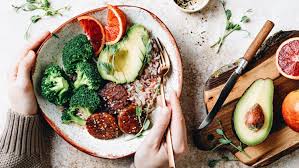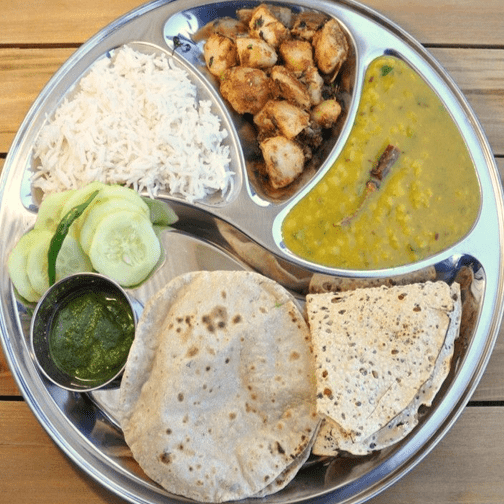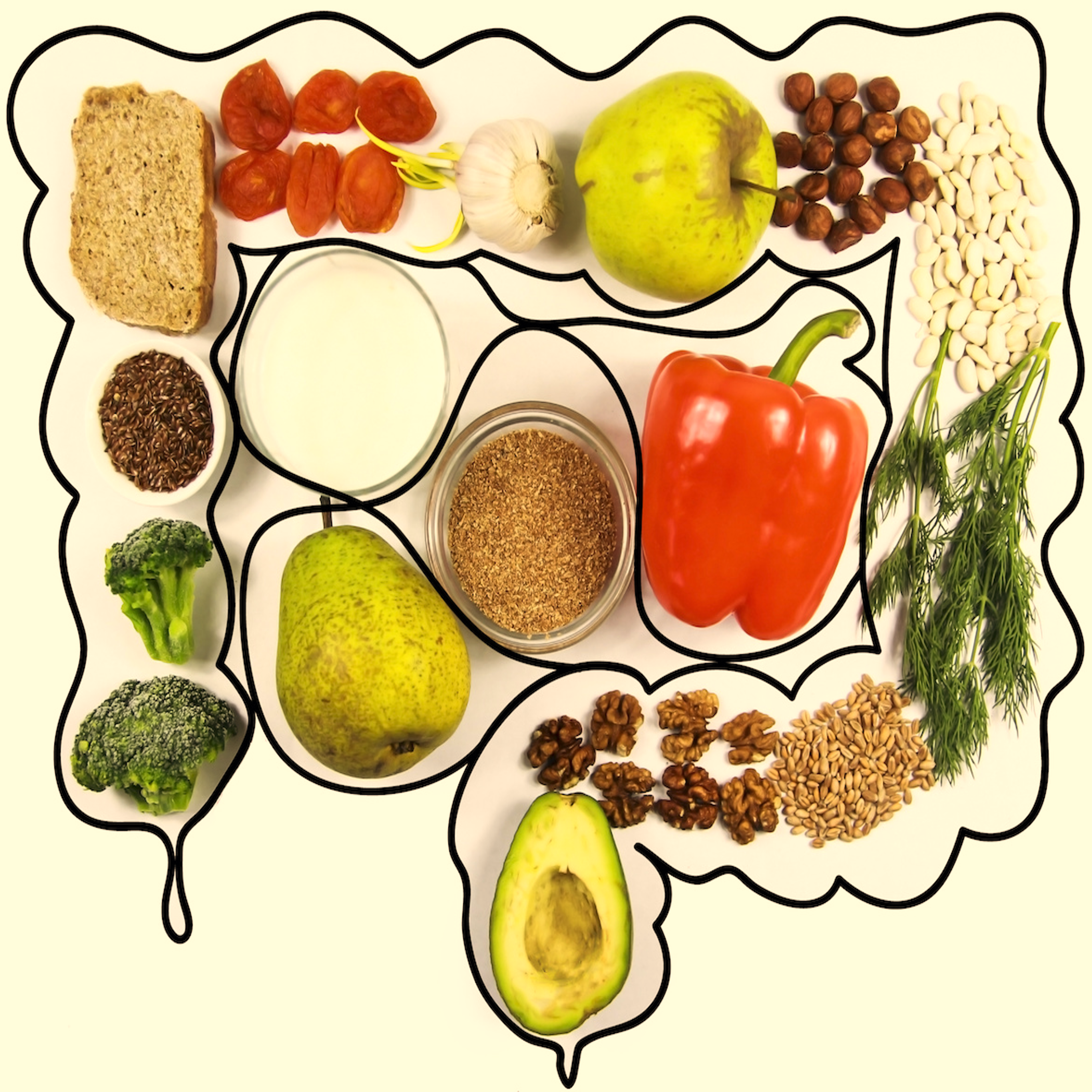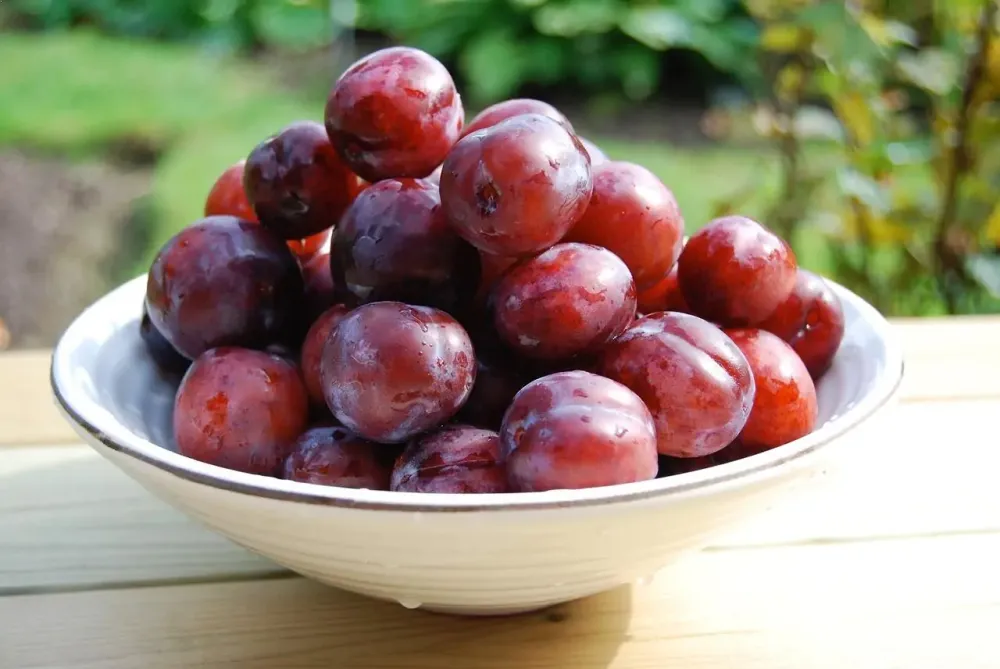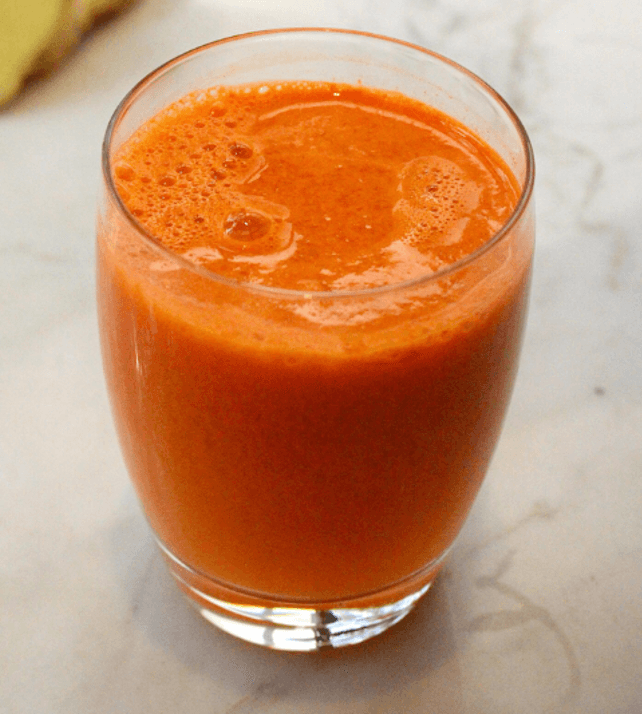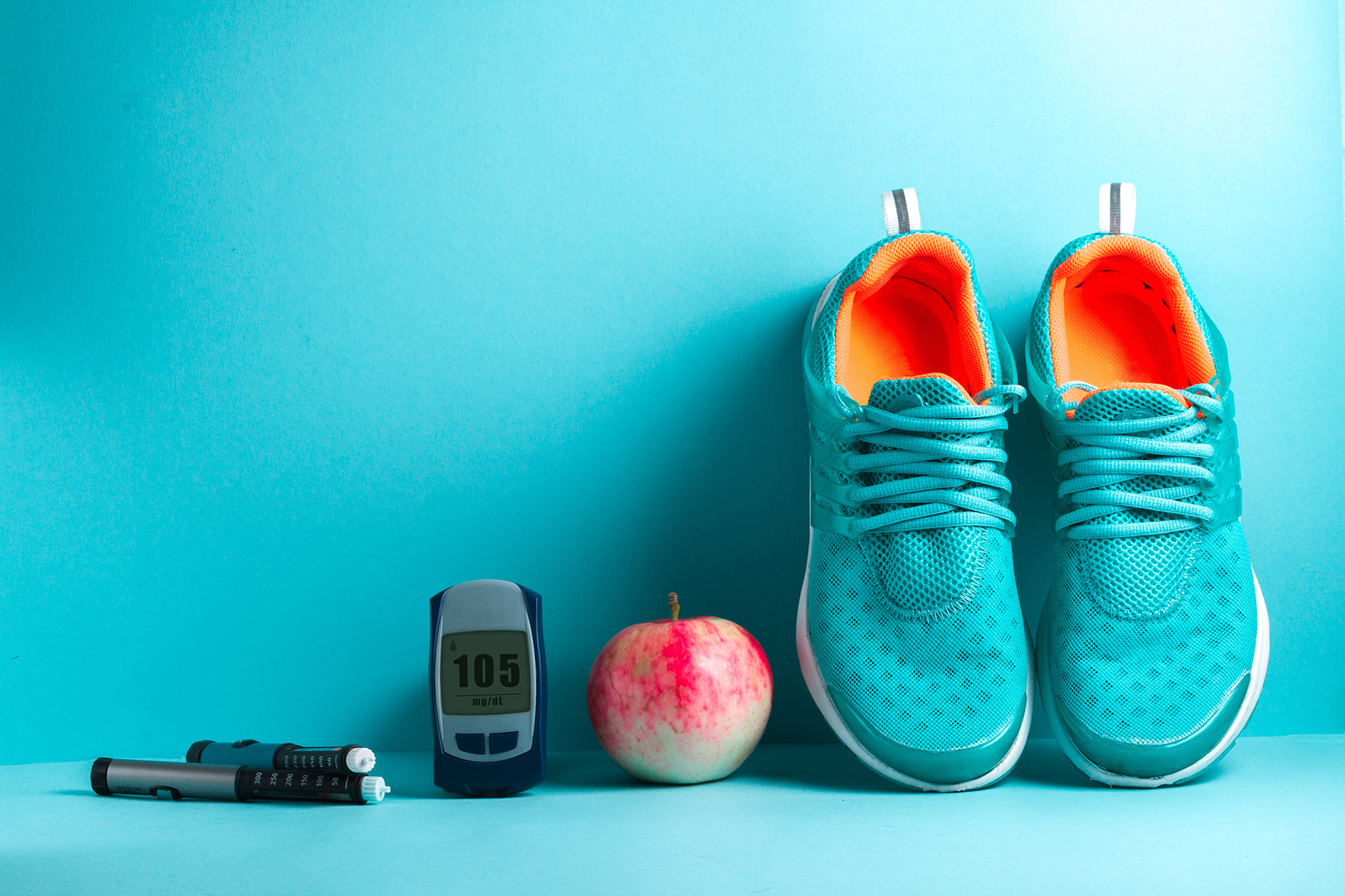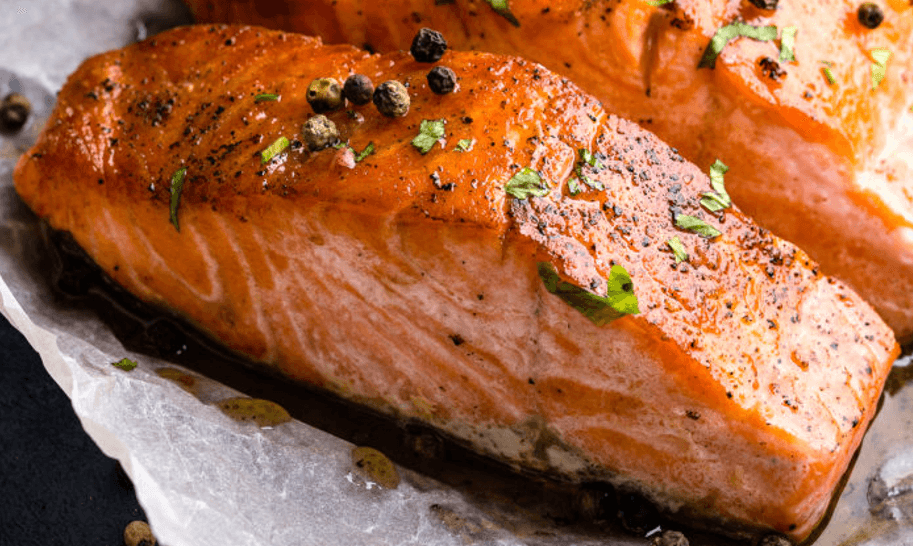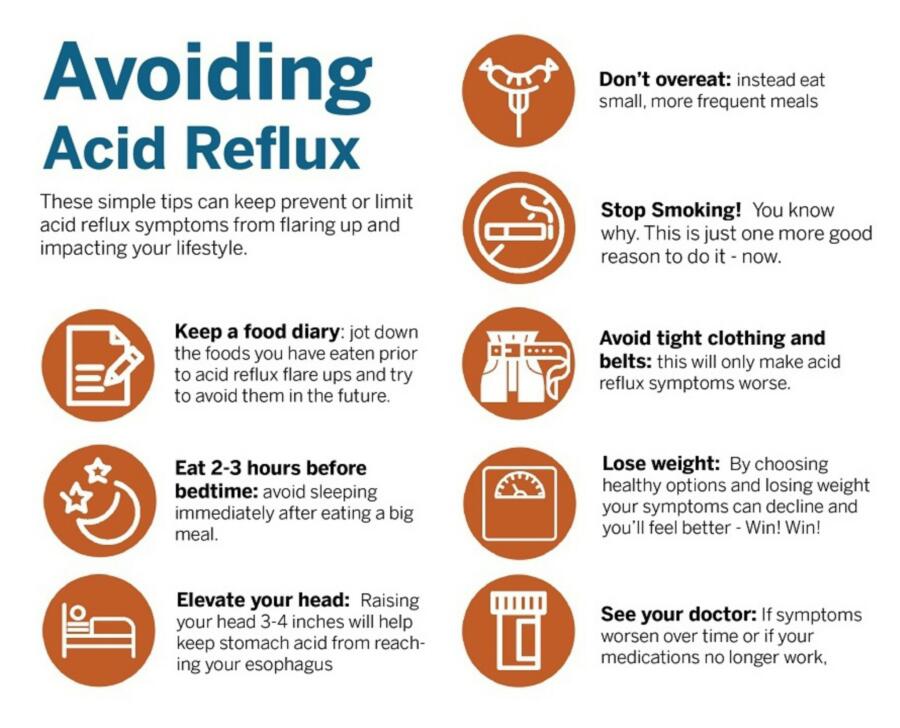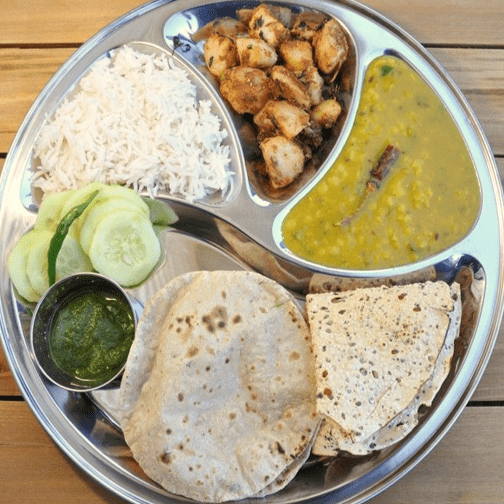Living with Irritable Bowel Syndrome with Diarrhea (IBS-D) can be incredibly challenging, often dictating daily life and food choices. For individuals who cherish Indian cuisine, navigating IBS-D symptoms while adhering to traditional dietary preferences can feel like an impossible task. However, it’s entirely possible to create an effective and culturally appropriate Indian Diet Plan for IBS diarrhea that brings relief without sacrificing flavor or tradition. This Indian diet guide for IBS diarrhea will walk you through a practical, evidence-based approach to managing your symptoms while enjoying the rich tapestry of Indian foods.
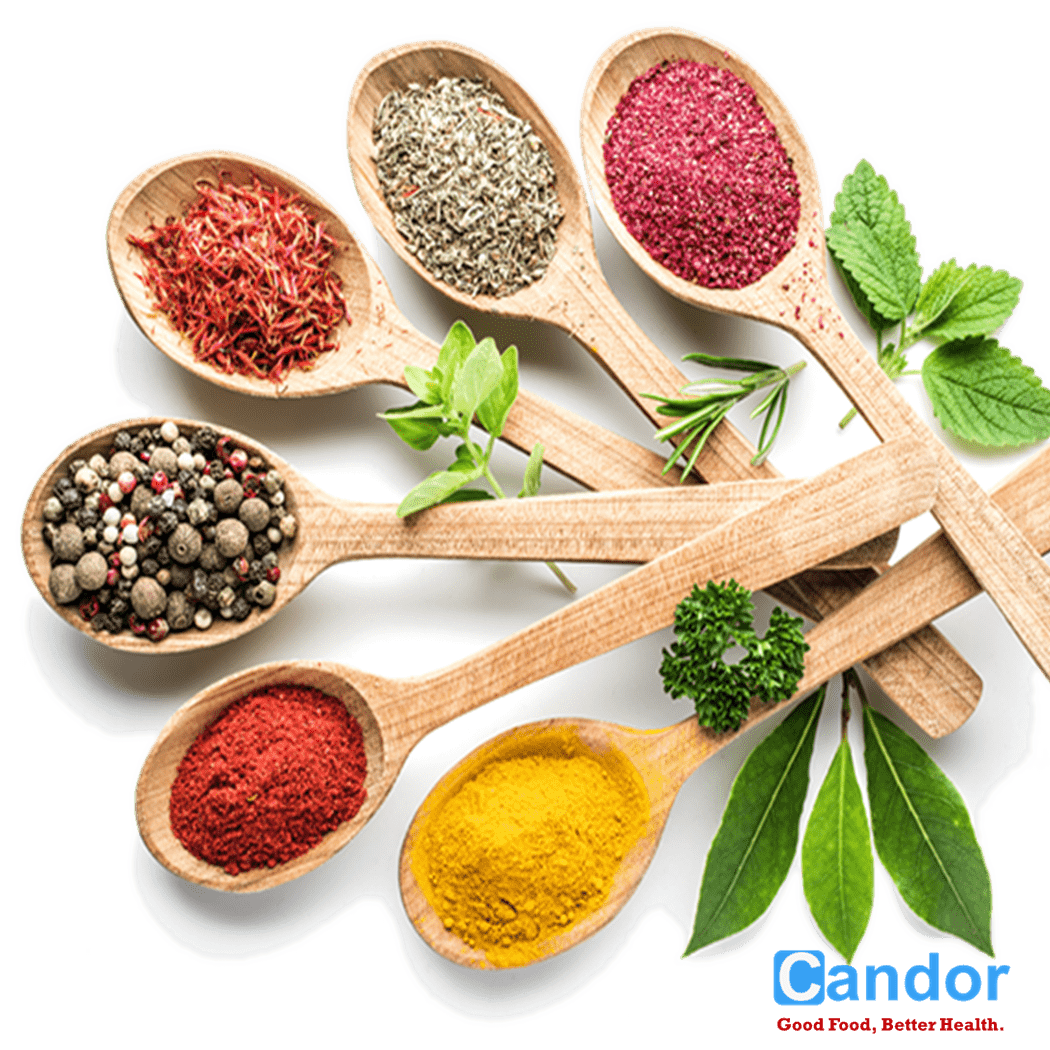
Understanding IBS Diarrhea (IBS-D) and Its Dietary Triggers
Irritable Bowel Syndrome (IBS) is a common gastrointestinal disorder characterized by a group of symptoms that include abdominal pain, bloating, gas, and changes in bowel habits. When diarrhea is the predominant symptom, it’s classified as IBS-D. The exact cause of IBS is unknown, but it’s believed to involve a combination of factors, including gut-brain axis dysfunction, altered gut motility, visceral hypersensitivity, and changes in the gut microbiome. For many, certain foods act as triggers, exacerbating symptoms.
Identifying these triggers is a crucial step in managing IBS-D. While individual triggers vary widely, common culprits often include foods high in FODMAPs (Fermentable Oligosaccharides, Disaccharides, Monosaccharides, and Polyols), excessive fat, caffeine, alcohol, and very spicy dishes. Understanding these general categories can help you begin to tailor an effective Indian Diet Plan for IBS diarrhea, focusing on minimizing discomfort while maintaining nutritional balance.
The Low-FODMAP Approach for an Indian Diet Guide for IBS Diarrhea
What are FODMAPs?
FODMAPs are a group of short-chain carbohydrates that are poorly absorbed in the small intestine. When they reach the large intestine, they are fermented by gut bacteria, producing gas and drawing water into the bowel. For individuals with sensitive guts, like those with IBS, this process can lead to bloating, pain, and altered bowel movements, including diarrhea. Foods high in FODMAPs include certain fruits, vegetables, legumes, grains, dairy products, and sweeteners.
The Low-FODMAP diet, developed by researchers at Monash University, is a three-phase dietary approach that has been scientifically proven to alleviate IBS symptoms in up to 75% of sufferers. It involves an initial elimination phase, followed by a reintroduction phase to identify specific triggers, and finally, a personalization phase. This method is highly effective in pinpointing which foods contribute to your IBS-D symptoms, allowing for a targeted and sustainable dietary plan.
Adapting the Low-FODMAP Diet to Indian Cuisine
Indian cuisine is incredibly diverse, rich in flavors, and often incorporates ingredients that can be high in FODMAPs, such as onions, garlic, certain lentils, and wheat. However, it also features a wealth of naturally low-FODMAP ingredients that can form the foundation of a delicious and therapeutic Indian Diet Plan for IBS diarrhea. The key is thoughtful selection and preparation, focusing on traditional cooking methods and substituting high-FODMAP items with their gut-friendly counterparts. This adaptation allows you to enjoy familiar tastes while effectively managing your IBS-D symptoms.
By understanding which common Indian ingredients fall into high-FODMAP categories, you can make informed choices without feeling deprived. For instance, while most dals are high in FODMAPs, some varieties and smaller portions can be tolerated. Similarly, the careful use of spices, rather than relying on onion and garlic for flavor, can transform many dishes into IBS-friendly meals. This strategic modification ensures that your diet remains culturally relevant and enjoyable.
Building Your Indian Diet Guide for IBS Diarrhea
Creating an Indian Diet Guide for IBS diarrhea involves focusing on ingredients that are naturally low in FODMAPs and gentle on the digestive system. This doesn’t mean a bland diet; rather, it’s about making smart choices that bring both flavor and comfort. Here’s a breakdown of food categories and specific Indian ingredients to embrace.
Grains and Starches
Choosing the right grains is fundamental for an IBS-friendly diet. Many traditional Indian grains are excellent choices, providing energy and fiber without irritating the gut.
- Rice: White rice, basmati rice, and brown rice (in moderation) are generally well-tolerated and can form the backbone of many meals. They are naturally gluten-free and low in FODMAPs, making them a safe staple.
White rice, including basmati, is particularly easy to digest and is a versatile base for curries and other dishes. Brown rice, while higher in fiber, can be included in smaller portions if tolerated, offering additional nutrients. These rice varieties are excellent choices for main meals and side dishes.
- Ragi (Finger Millet): This nutritious millet is gluten-free and low in FODMAPs, making it an excellent alternative to wheat. It’s often used to make rotis or dosas.
Ragi is a powerhouse of calcium and fiber, offering a wholesome option for those with IBS-D. Its earthy flavor complements various Indian preparations, providing a nutrient-dense and gut-friendly grain choice. Incorporating ragi flour into your diet can open up new possibilities for traditional Indian breads.
- Quinoa: While not traditionally Indian, quinoa is a gluten-free pseudo-cereal that is low in FODMAPs and can be incorporated into an Indian diet as a rice substitute or in salads.
Quinoa offers a complete protein source and is incredibly versatile, easily absorbing the flavors of Indian spices. It can be a great addition for those looking to diversify their grain intake while sticking to IBS-friendly options. Its fluffy texture makes it a pleasant alternative to rice.
Proteins
Adequate protein intake is essential. Focus on lean, easily digestible protein sources.
- Chicken and Fish: Lean meats like chicken and most fish varieties (e.g., salmon, cod, tilapia) are excellent low-FODMAP protein sources. They can be prepared in gentle curries or grilled.
When preparing chicken and fish, opt for methods like grilling, baking, or stewing in mild, tomato-based gravies rather than heavy, creamy sauces. These proteins are easily digestible and provide essential amino acids, supporting muscle health and overall well-being for those on an Indian Diet Plan for IBS diarrhea.
- Paneer (Lactose-Free): While traditional paneer can be high in lactose, lactose-free paneer or homemade paneer (where lactose is largely removed during preparation) can be a good source of protein for vegetarians.
Paneer is a versatile cheese that can be cubed and added to mild curries or stir-fried with low-FODMAP vegetables. If you are sensitive to lactose, ensure your paneer is certified lactose-free or made in a way that minimizes lactose content. This allows vegetarians to enjoy a traditional protein source.
- Moong Dal (Yellow Split Lentils): In small, controlled portions (typically 1/4 cup cooked), moong dal is often tolerated better than other legumes, as it’s lower in FODMAPs.
Moong dal is relatively easy to digest compared to other lentils. It can be prepared as a simple, thin dal with minimal spices. Starting with very small portions and observing your body’s reaction is key to incorporating moong dal successfully into your Indian Diet Plan for IBS diarrhea.
Vegetables
Many vibrant Indian vegetables are low in FODMAPs and packed with nutrients. Focus on these to add bulk and vitamins to your meals.
- Carrots, Green Beans, Spinach, Okra, Potatoes: These are generally well-tolerated and can be used in curries, stir-fries, or side dishes.
These vegetables provide essential vitamins, minerals, and fiber without triggering IBS symptoms. They can be cooked simply, perhaps steamed or lightly sautéed with turmeric and cumin, to create flavorful and gut-friendly additions to any Indian meal. Their versatility makes them staples in an IBS-friendly kitchen.
- Bottle Gourd (Lauki), Ridge Gourd (Turai), Zucchini: These mild gourds are hydrating and very gentle on the digestive system, perfect for light curries or vegetable preparations.
Often overlooked, these gourds are excellent for individuals with IBS-D due to their high water content and mild flavor. They can be incorporated into a variety of dishes, offering a light and soothing component to your meals. Their soft texture makes them easy to digest.
Fruits
While many fruits are high in FODMAPs, several Indian favorites are safe in moderate portions.
- Banana (firm, unripe), Cantaloupe, Oranges, Grapes: These fruits can satisfy sweet cravings and provide essential vitamins without causing distress.
It’s important to choose firm, unripe bananas as they have lower FODMAP content than ripe ones. Cantaloupe, oranges, and grapes offer refreshing and safe fruit options, providing natural sweetness and hydration. Always stick to recommended portion sizes to avoid potential triggers.
Fats and Oils
Healthy fats are crucial for nutrient absorption and satiety.
- Ghee (Clarified Butter), Olive Oil, Coconut Oil: These fats are generally well-tolerated in moderate amounts. Ghee, in particular, is traditional and lactose-free.
Ghee adds a rich, nutty flavor to Indian dishes and is a staple in many kitchens. Olive oil and coconut oil are also versatile and can be used for cooking or dressing. Using these fats in moderation helps to minimize potential digestive upset, as excessive fat can sometimes trigger IBS symptoms.
Herbs and Spices
The soul of Indian cooking, spices can still be enjoyed with caution.
- Turmeric, Cumin, Coriander, Ginger (mildly), Asafoetida (Hing, in small amounts, preferably gluten-free): These spices add flavor and offer potential anti-inflammatory benefits.
Turmeric, cumin, and coriander are generally well-tolerated and form the base of many Indian spice blends. Fresh ginger can add a warming kick without the FODMAPs of garlic. Asafoetida, when used in tiny amounts, can mimic the flavor of onion and garlic, but be sure to choose a gluten-free variety as it often contains wheat flour. These spices allow you to maintain the authentic taste of your Indian Diet Plan for IBS diarrhea.
Foods to Approach with Caution or Avoid
While the focus is on what to eat, understanding what to limit or avoid is equally vital for an effective Indian Diet Guide for IBS diarrhea. Many common Indian ingredients are high in FODMAPs and can trigger symptoms.
High-FODMAP Lentils and Beans (Dals and Legumes)
Most lentils and beans are high in oligosaccharides, a type of FODMAP. They are a common trigger for gas and diarrhea in IBS sufferers.
- Rajma (Kidney Beans), Chana (Chickpeas), Urad Dal (Black Gram), Masoor Dal (Red Lentils): These are generally high in FODMAPs and should be avoided or consumed in very small, carefully tested portions.
These legumes can cause significant digestive distress for many individuals with IBS-D. Their high fiber and oligosaccharide content lead to increased fermentation in the gut, resulting in bloating, pain, and diarrhea. It’s best to eliminate them during the initial phase of your diet and reintroduce only if symptoms are well-controlled.
Certain Vegetables
While vegetables are healthy, some are notorious for their high FODMAP content.
- Onion and Garlic: These are pervasive in Indian cooking but are major FODMAP triggers. Their elimination is often crucial for symptom relief.
Onion and garlic contain fructans, which are poorly absorbed and highly fermentable. Learning to cook without them is a significant step in managing IBS-D. You can infuse oils with garlic for flavor without eating the solids, or use small amounts of asafoetida (hing) as a substitute for an onion-garlic base. This adjustment is central to an effective Indian Diet Plan for IBS diarrhea.
- Cauliflower, Cabbage, Broccoli (in large amounts): These cruciferous vegetables are high in FODMAPs and can cause gas and bloating.
While nutritious, these vegetables can be problematic for sensitive guts. Small portions of broccoli florets (not stalks) might be tolerated by some, but it’s generally safer to limit or avoid them during the elimination phase. Focus on safer vegetable options instead to maintain comfort.
Dairy Products
Lactose, the sugar in milk, is a disaccharide FODMAP. Many individuals with IBS also have some degree of lactose intolerance.
- High-Lactose Milk, Yogurt, and Buttermilk: Unless they are lactose-free, these can trigger symptoms.
Traditional dairy products like whole milk, regular yogurt (dahi), and buttermilk can contribute to diarrhea and bloating due to their lactose content. Opt for lactose-free milk, yogurt, or plant-based alternatives like almond milk (unsweetened) or rice milk. Ghee is generally safe as it is clarified butter with most lactose removed.
Excessive Spices and Processed Foods
Beyond FODMAPs, other dietary factors can irritate the gut.
- Excessive Red Chili and Garam Masala: While mild spices are fine, too much heat can irritate the gut lining and exacerbate diarrhea.
Spicy foods can stimulate gut motility, which is already heightened in IBS-D. It’s best to reduce the quantity of red chili powder and be mindful of complex spice blends like garam masala, which can sometimes contain high-FODMAP ingredients. Prioritize milder spices like turmeric, cumin, and coriander.
- Fried Foods and Sugary Snacks: High-fat foods can slow digestion and cause discomfort, while refined sugars can feed problematic gut bacteria.
Deep-fried snacks (pakoras, samosas) and sugary Indian sweets (gulab jamun, jalebi) are not only high in unhealthy fats and sugars but can also be difficult for an IBS-D gut to process. Opt for baked or steamed alternatives and naturally sweet fruits as healthier choices within your Indian Diet Plan for IBS diarrhea.
Sample Indian Meal Plan for IBS-D
Here’s a conceptual framework for an Indian Diet Plan for IBS diarrhea, focusing on low-FODMAP options. Remember, portion sizes are key, and individual tolerance varies.
Breakfast
Start your day with gentle, easily digestible options that provide sustained energy without upsetting your stomach.
- Rice Idli with Sambar (No Onion/Garlic): Soft, fermented rice cakes are typically well-tolerated. Ensure the sambar is made with low-FODMAP vegetables and without onion or garlic.
Idlis are steamed and light, making them an excellent choice. The accompanying sambar can be prepared using carrots, green beans, and a light tamarind base, flavored with curry leaves, mustard seeds, and asafoetida (gluten-free). This provides a balanced and flavorful start to the day.
- Moong Dal Cheela: A savory pancake made from yellow split lentils, prepared with grated carrots or spinach, and minimal spices.
Moong dal cheela offers a protein-rich alternative. Ensure the portion of moong dal is kept small (e.g., one or two thin cheelas) and avoid adding high-FODMAP vegetables. It’s a versatile option that can be customized with safe ingredients.
Lunch
A balanced lunch will keep you energized and comfortable throughout the afternoon.
- Basmati Rice with Simple Moong Dal and Low-FODMAP Vegetable Curry: A classic combination, ensuring the dal is thin and the curry avoids trigger ingredients.
The basmati rice provides a staple carbohydrate, while the simple moong dal adds a digestible protein. A vegetable curry featuring options like carrots, spinach, bottle gourd, or potatoes, cooked with turmeric, cumin, and coriander, offers vitamins and minerals. This ensures a wholesome and gentle meal.
- Chicken or Fish Curry with Ragi Roti: A lean protein option served with a gluten-free millet roti.
Prepare the chicken or fish in a mild, tomato-based gravy, avoiding onion and garlic. Ragi roti is a fantastic alternative to wheat-based rotis, providing fiber and nutrients without the gluten. This combination offers a hearty yet IBS-friendly lunch option.
Dinner
Light and easy-to-digest dinners are best for a good night’s sleep and preventing evening discomfort.
- Quinoa Pulao with Steamed Vegetables: A light, flavorful dish using quinoa as a base, incorporating approved vegetables and mild spices.
Quinoa pulao can be made with carrots, green beans, and a pinch of turmeric and cumin for flavor. It’s a lighter alternative to rice and provides a complete protein, making it suitable for dinner. Steamed vegetables on the side further enhance its digestive friendliness.
- Grilled Paneer (Lactose-Free) or Tofu with Sauteed Spinach: A protein-rich, low-carb option for a lighter evening meal.
Ensure the paneer is lactose-free. Tofu is also a good low-FODMAP option. Grill or pan-fry these proteins and serve with gently sautéed spinach or other low-FODMAP greens, seasoned simply with salt and pepper. This provides a satisfying and easily digestible dinner.
Snacks
Keep snacks simple and natural to manage hunger between meals without triggering symptoms.
- Firm Banana or Small Bowl of Grapes: Fresh fruits that are low in FODMAPs.
These natural options are excellent for satisfying a craving or providing a quick energy boost. Always stick to recommended serving sizes for fruits to avoid potential issues. A firm banana is particularly beneficial as it is low in FODMAPs and provides potassium.
- Handful of Almonds or Walnuts: In small, controlled portions (around 10-15 almonds or a few walnut halves).
These nuts offer healthy fats and protein. However, portion control is crucial as large amounts can be high in FODMAPs. They are a convenient and nutritious snack when consumed in moderation. This can be a satisfying addition to your Indian Diet Plan for IBS diarrhea.
Practical Tips for Managing IBS-D with an Indian Diet
Beyond specific food choices, how you approach eating and lifestyle can significantly impact IBS-D management. Integrating these practical tips into your daily routine will enhance the effectiveness of your Indian Diet Plan for IBS diarrhea.
Cooking Methods Matter
The way food is prepared can alter its digestibility. Opt for methods that are gentle on the digestive system.
- Boiling, Steaming, and Light Sautéing: These methods break down fibers and make food easier to digest compared to deep-frying.
Steaming vegetables helps retain nutrients while making them softer and less irritating to the gut. Boiling pulses or grains thoroughly can also improve digestibility. When sautéing, use minimal oil and avoid over-browning ingredients, as charring can sometimes create irritants.
- Pressure Cooking: For grains and some vegetables, pressure cooking can help make them softer and more digestible.
Pressure cooking is a common practice in Indian kitchens and can be beneficial for IBS sufferers. It significantly reduces cooking time and helps break down complex carbohydrates in foods like rice and certain lentils (if tolerated), making them gentler on the stomach. It ensures thorough cooking, which is crucial for sensitive systems.
Portion Control and Mindful Eating
Even low-FODMAP foods can trigger symptoms if consumed in excess. Listen to your body’s signals.
- Eat Smaller, More Frequent Meals: Instead of three large meals, try 5-6 smaller meals throughout the day to avoid overwhelming your digestive system.
Smaller meals reduce the load on your gut, preventing the overstretching of the intestines that can lead to pain and discomfort. This strategy helps maintain a steady energy level and better manage digestive symptoms throughout the day, providing consistent nourishment.
- Eat Slowly and Chew Thoroughly: Digestion begins in the mouth. Taking your time allows for better breakdown of food and sends signals to your gut, aiding the digestive process.
Rushing through meals or not chewing properly can lead to swallowing air, which contributes to gas and bloating. Mindful eating also helps you recognize your body’s satiety cues, preventing overeating and potential symptom flare-ups.
Hydration is Key
Proper fluid intake is crucial for bowel regularity, especially for IBS-D.
- Drink Plenty of Water: Staying hydrated supports healthy bowel function and prevents dehydration, which can worsen diarrhea.
Aim for at least 8 glasses of water a day, and more if you are experiencing significant diarrhea or are physically active. Water helps in the smooth passage of food through the digestive tract and rehydrates the body, alleviating some IBS-D symptoms. Avoid sugary drinks and excessive caffeine.
Stress Management
The gut-brain connection is strong. Stress can significantly impact IBS symptoms.
- Incorporate Relaxation Techniques: Yoga, meditation, deep breathing exercises, or spending time in nature can help reduce stress levels.
Managing stress is an integral part of an effective Indian Diet Plan for IBS diarrhea. High stress levels can exacerbate gut sensitivity and alter gut motility, leading to more frequent and intense IBS flare-ups. Regular relaxation practices can calm the nervous system and indirectly improve digestive comfort.
Track Your Symptoms
Understanding your individual triggers is paramount. A food and symptom journal can provide invaluable insights.
- Keep a Food and Symptom Diary: Document what you eat, your symptoms, their severity, and other factors like stress levels.
This systematic approach helps identify patterns and specific triggers that might not be obvious. Tools like the Candor app make this process seamless. You can download the Candor app on the App Store or get it from Google Play. The app allows you to log meals, symptoms, and habits with your voice and generates insights based on your data, making it easier to pinpoint what works and what doesn’t for your unique system.
The Reintroduction Phase: Expanding Your Indian Diet
The low-FODMAP diet isn’t meant to be a permanent solution. After the initial elimination phase, where you strictly follow the Indian Diet Plan for IBS diarrhea with low-FODMAP foods, the reintroduction phase is critical. This systematic process involves reintroducing one high-FODMAP food category at a time, in increasing amounts, over a few days, to determine your individual tolerance levels.
This phase is where you learn which specific FODMAPs trigger your symptoms and to what extent. For example, you might discover that you can tolerate small amounts of moong dal but not chickpeas, or that onions are a major trigger while garlic powder in trace amounts is fine. This personalized understanding allows you to liberalize your diet as much as possible, reintroducing beloved Indian ingredients where safe, making your IBS diet more varied and sustainable long-term. Always approach reintroduction slowly and carefully, noting any reactions in your symptom journal.
When to Seek Professional Guidance
While this guide provides a comprehensive Indian Diet Plan for IBS diarrhea, it’s not a substitute for professional medical advice. Managing IBS-D can be complex, and a personalized approach is often necessary.
Consulting with a registered dietitian, particularly one specializing in gut health and the low-FODMAP diet, is highly recommended. A dietitian can help you navigate the nuances of the diet, ensure nutritional adequacy, and provide tailored advice based on your specific health profile and cultural preferences. They can offer invaluable support in identifying triggers, adapting recipes, and safely reintroducing foods. You can find accredited professionals through organizations like the Indian Dietetic Association Guidelines, who can provide expert guidance to support your journey towards better digestive health.
Conclusion
Embarking on an Indian Diet Plan for IBS diarrhea can transform your relationship with food and bring significant relief from chronic symptoms. By understanding the principles of the low-FODMAP diet and thoughtfully adapting them to traditional Indian cuisine, you can enjoy flavorful, satisfying meals without the fear of digestive upset. It requires patience, careful planning, and an attuned ear to your body’s signals, but the rewards of improved comfort and well-being are immeasurable.
Remember that this journey is personal. What works for one person may not work for another. Stay consistent with your dietary choices, track your progress, and don’t hesitate to seek professional guidance when needed. With a mindful approach, you can manage your IBS-D effectively, embrace the rich culinary heritage of India, and live a life less dictated by digestive discomfort.
Try the Candor app, which lets you log meals, symptoms, and habits with your voice — and instantly generates insights based on your data. Download on the App Store / Google Play.
This information is for educational purposes. Consult a registered dietitian or gastroenterologist before making significant dietary changes. These other resources could be helpful.

